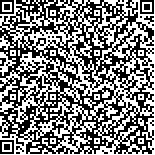Archive > Volume 38 Issue 9 > 2012,38(9):1033-1041. DOI:10.7519/j.issn.1000-0526.2012.09.001 Prev Next
Comparison of GPS Radio Occultation Dry Temperature and China’s Radisonde Temperature in the Upper Troposphere and Lower Stratosphere
- Article
- Figures
- Metrics
- Preview PDF
- Reference
- Related
- Cited by
- Materials
Abstract:
Temperature differences between GPS/RO dry retrievals, derived from COSMIC Data Analysis and Archival Center (CDAAC), and China’s radiosonde temperature profiles in the Upper Troposphere and Lower Stratosphere (UTLS, from 200 to 30 hPa) are calculated to analyze the radiosonde temperature bias. A simple quality control is carried out first to reduce the effects of outliers. Total mean temperature difference and standard deviation with temporal difference ranging from 1 to 3 hours and spatial distance ranging from 30 to 300 km are calculated to check the affection of collocation methods. Results show that the mean difference between GPS/RO retrieval and radiosonde temperature is independent of the collocation criteria, which mainly affect the standard deviation. Compared to GPS/RO data, China’s radiosonde temperature shows a small warm mean bias in general, and the absolute mean bias and standard deviation in upper troposphere are larger than that in lower stratosphere. Latitudinal comparison results show that bias distribution characteristic agrees well with the temperature lapse rate, which indicates that GPS/RO data have the ability to differentiate the lag errors of radiosonde measurements. The bias is larger in low latitudes than that in high latitudes. Comparison of temperature difference in daytime and nighttime reveals that GPS/RO data can differentiate radiative errors of radiosonde caused by solar radiation. In comparison to the small bias between the new L band electronic radiosonde and GPS/RO profiles, the significant temperature bias between type 59 mechanic radiosonde and GPS/RO data, especially in low latitude area, which may be attributed to large lag errors caused by the large lag index of type 59 radiosonde and lapse rate in low latitude area, demonstrates the ability of GPS/RO data to differentiate the old and new radiosonde type of China and the improvements of temperature precision by the L band radiosonde measurements.
Keywords:
Project Supported:
Clc Number:


Mobile website









